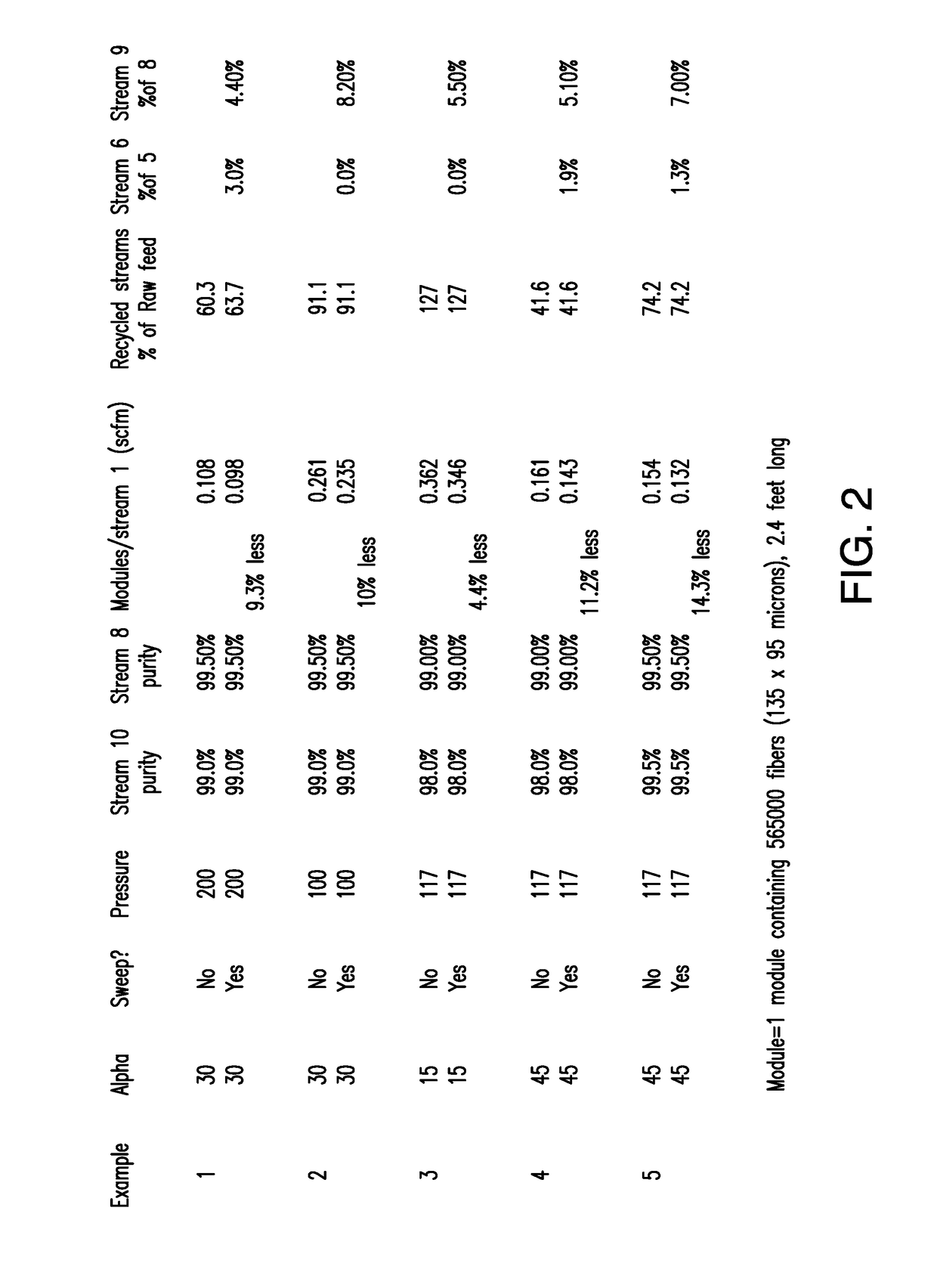Membrane-based gas separation with retentate sweep
- Summary
- Abstract
- Description
- Claims
- Application Information
AI Technical Summary
Benefits of technology
Problems solved by technology
Method used
Image
Examples
example 1
[0043]This example assumes a feed gas having two components, labeled A and B, and wherein the feed gas is 50% A and 50% B, by volume. This run of the simulation assumes that one produces product streams comprising 99% A and 99.5% B. The method uses hollow fiber membranes with a permeance for component B of 1 GPU (gas permeation unit, expressed as a standard flow per unit time per unit of surface area per unit of pressure), and a permeance for component A of 30. Thus, the ratio of permeance for A to permeance for B, known as alpha, is 30.
[0044]All simulations in the examples assumed that each module has 565,000 fibers, with a size of 135×95 microns, and that the fibers are 2.4 feet long. The simulation assumed that the membrane modules could be operated as ideal counter-current modules.
[0045]The feed gas pressure in this example was 200 psig.
example 2
[0046]This example had the same parameters as Example 1, except that the pressure of the feed gas was reduced to 100 psig.
example 3
[0047]In this example, the feed gas pressure was 117 psig. Also, the value of alpha, i.e. the ratio of permeance of component A to the permeance of component B was 15. Finally, in this example, the purities of the products were set to 98% A and 99% B.
PUM
 Login to View More
Login to View More Abstract
Description
Claims
Application Information
 Login to View More
Login to View More - R&D Engineer
- R&D Manager
- IP Professional
- Industry Leading Data Capabilities
- Powerful AI technology
- Patent DNA Extraction
Browse by: Latest US Patents, China's latest patents, Technical Efficacy Thesaurus, Application Domain, Technology Topic, Popular Technical Reports.
© 2024 PatSnap. All rights reserved.Legal|Privacy policy|Modern Slavery Act Transparency Statement|Sitemap|About US| Contact US: help@patsnap.com









